Back in May I was inspired to make the Emerald Dress from Making Magazine, designed by Made by Rae. I didn’t actually think that it would flatter my body type but I was intrigued to try sewing a garment on the bias for the first time and Rae’s pattern have such clear instructions and such lovely, flattering lines and generally fit me without alterations so I decided to go for it.
This pattern is a free download once you buy the magazine. Because the pattern pieces are cut on the bias, it requires more fabric and very precise cutting when you are cutting out the main pieces.
I was up for the challenge. I had a 4 yard piece of a striped lightweight cotton from the Loominous line by Anna Maria Horner. I had bought it on sale a couple of years ago thinking it would be good for backing a quilt. I thought the stripes would be interesting with this design. I deliberately did not match them at the seams because I thought it would create more of a sense of movement. Taking my time to cut things out carefully was actually nice for a change. I am usually a batch sewing queen, cutting out several things at a time to be more efficient but I find that I really enjoy the process of sewing a new pattern one step at a time and taking my time. It becomes a really meditative process for me. I moved my two largest cutting boards down to the dining room table and used a large clear quilting ruler to line up the fabric on the bias using the stripes to guide me.
I cut on the S/M lines based on my bust measurement of 37″ and took my time. I added two inches to the length by drawing a new cutting line for the hem about two inches below the pattern line so first version has a skirt that flares just a bit wider than as designed. To compensate, I cut the hem facings a bit wider on each end. I am 5’9″ tall and I always add 2 inches to Rae’s tops and dresses since my height is all in my torso. I did not interface the hem or hem facings but I did interface the neck and arm facings.
I found this lightweight woven nice to work with but I found that lining up the V sharply proved a bit challenging. I got there in the end but I had to do some creative wrestling including cutting the facing edge at the bottom to allow it to spread a bit. I ironed everything into submission and added a row of stitching just around the neckline. I sewed the facing edge to the dress from the outside not the inside as the pattern calls for because my stitching looks nicer as topstitching.
I was actually surprised at how much I liked the final version. You can see a bit of stripe matching serendipity here. I didn’t try to match and didn’t really want it matching because I think it is more interesting that way but I like how some of the stripes come together at the side seam. It really accentuates the sewing lines. After making it, I thought about sizing up a bit in the neck and shoulders so it would be a bit more drapey. I used my bust measurement for the sizing but on closer reading, the high bust should have been my guide and I should have cut between the S/M and L/XL lines. I thought about changing the size when I made version 2 but as I wore this one, I decided I liked it as is. The stripes don’t match on the opposite side seam and the front seam has the stripes in slightly different alignment on the two sides which I like. I have always preferred things to not be too matchy matchy so this made me happy.
I had thought this would be a beach coverup caftan type thing and eventually that is what it will become but I have actually worn it out to my book group and to the office. I love the way it feels when worn, very comfortable, swishy, flowy and light for summer but with a polished, flattering neckline. Rae does it again!
After May was over, I took a couple of weeks off from sewing for a family visit for a graduation and when I got back, I kept thinking about making a second version. I really like making things at least twice because it gives me a chance to fix things I missed on round one.
I had a 2 yard piece of a dusty rose linen-rayon blend from fabric.com. I don’t even remember why I bought it, possibly to make another York pinafore and it would have been great for that, but I knew it would work well for this pattern because of the drape. Since I just had two yards and no stripes to deal with, I altered the angle of the pattern pieces when cutting it out so that they are on the bias but on a slightly less sharp angle. You can see it in the picture above. I cut the pieces out on the doubled fabric rather than flat so the angles would all be the same. I didn’t have enough for hem facings but I used a scrap of liberty, always a great solution!
I hadn’t intended to interface it because I wanted the hem to not be stiff but the floral pattern showed through the pink so I ended up using interfacing. I sewed this second version slowly but still completed it in a day. I had the same issue with my neckline and cut the V apart on the interfaced facing at the bottom and then sewed everything down. It is fine though not as neat as I would like on the inside. But honestly, that is no big deal. I drafted simple bias facings for the sleeves and didn’t interface them again because I wanted a drapey feel for the sleeves. I really love how they turned out.
And now, many pictures of the finished dress. On the front door:
and as worn.
This dress is great dressed up but would also be good as a more casual look with a chunky pullover sweater (I am looking for the right one) and clogs or with a jeans jacket and more casual jewelry.
UPDATE: found one!

It could totally go from a dinner out or church dress to a walking along the beach dress. And I think it is really flattering despite my initial misgivings.
Jessica (@kunklebaby on Instagram) made a beautiful version in a blue and white ikat. I may totally copy it!
Happy summer sewing friends!
***********************************************************************************************************************************************
This blog is not monetized or sponsored and if you click on links, I do not earn money. I just provide them to make it easier for you to find amazing patterns and resources in the sewing community.










































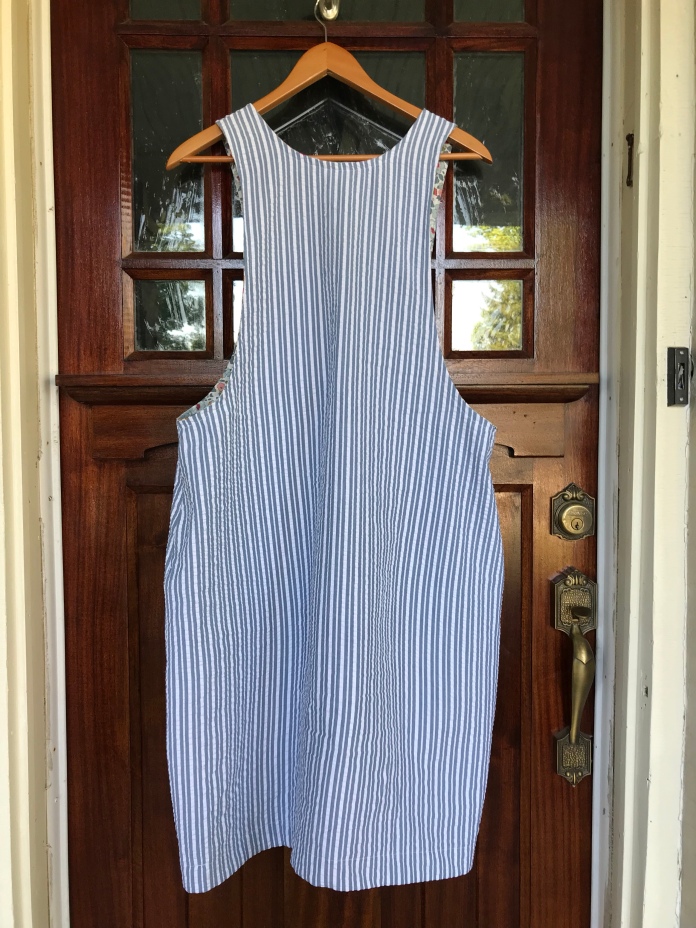
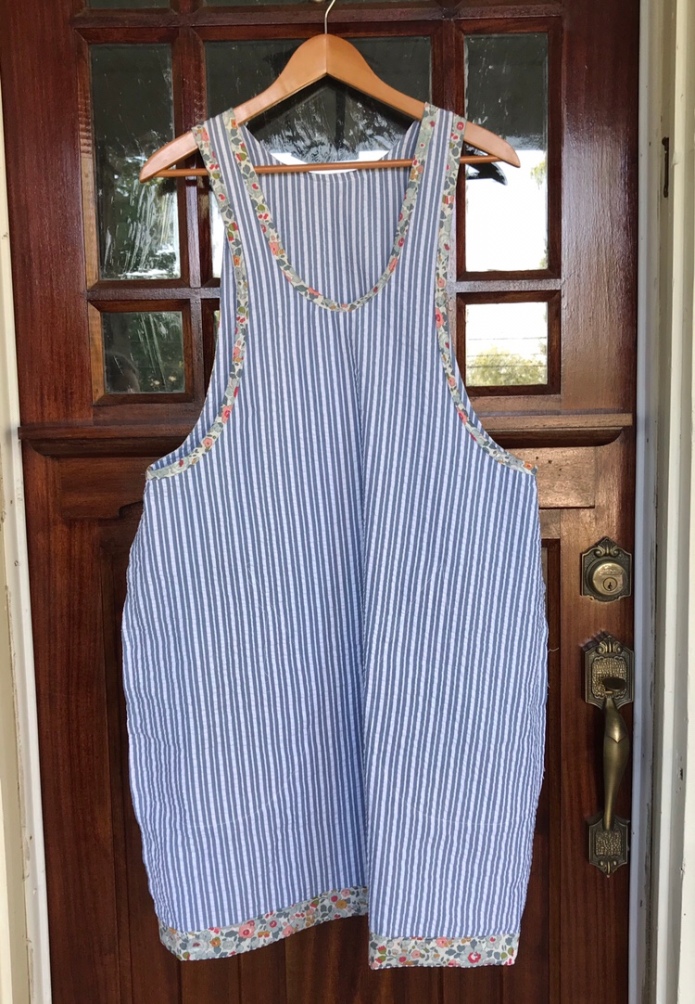







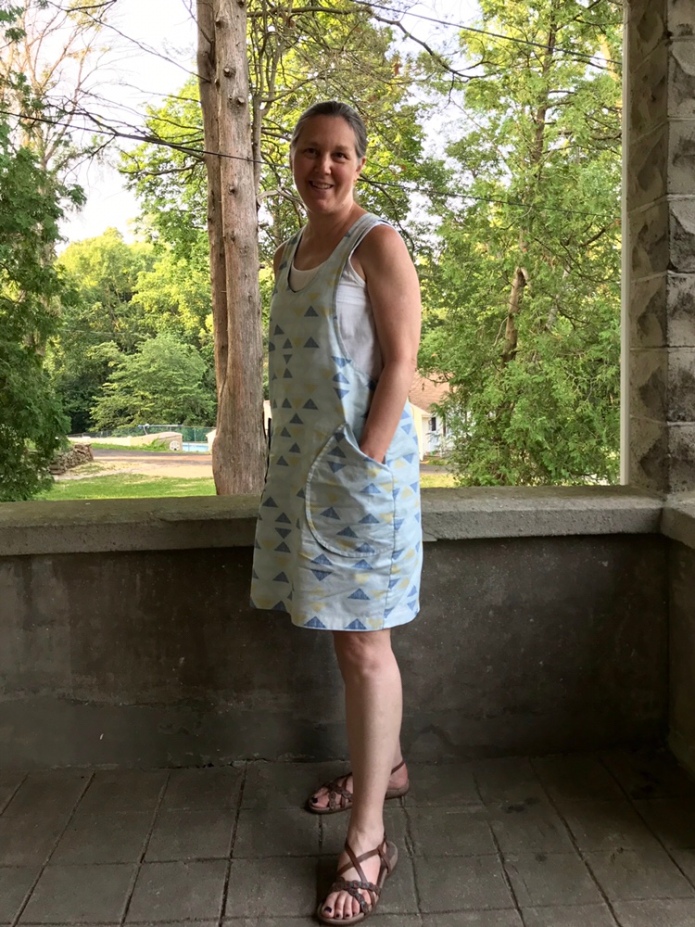






 I had altered
I had altered 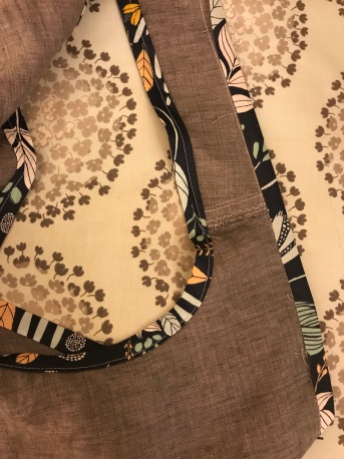

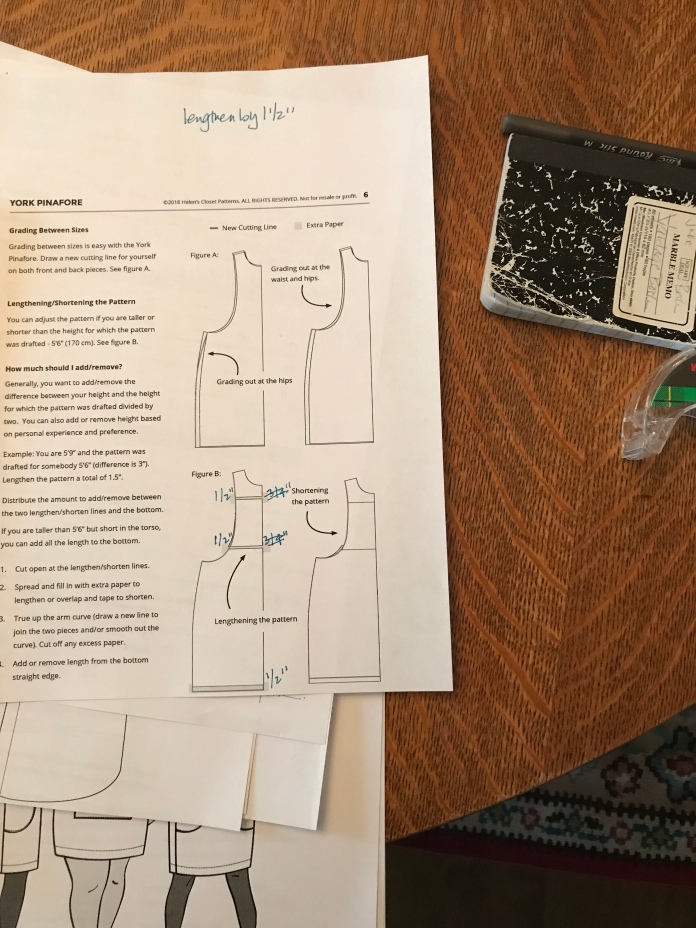



 I was a bit disappointed but I chalked it up to a learning experience and figured I would try washing it and see if the fabric would soften up a bit.
I was a bit disappointed but I chalked it up to a learning experience and figured I would try washing it and see if the fabric would soften up a bit.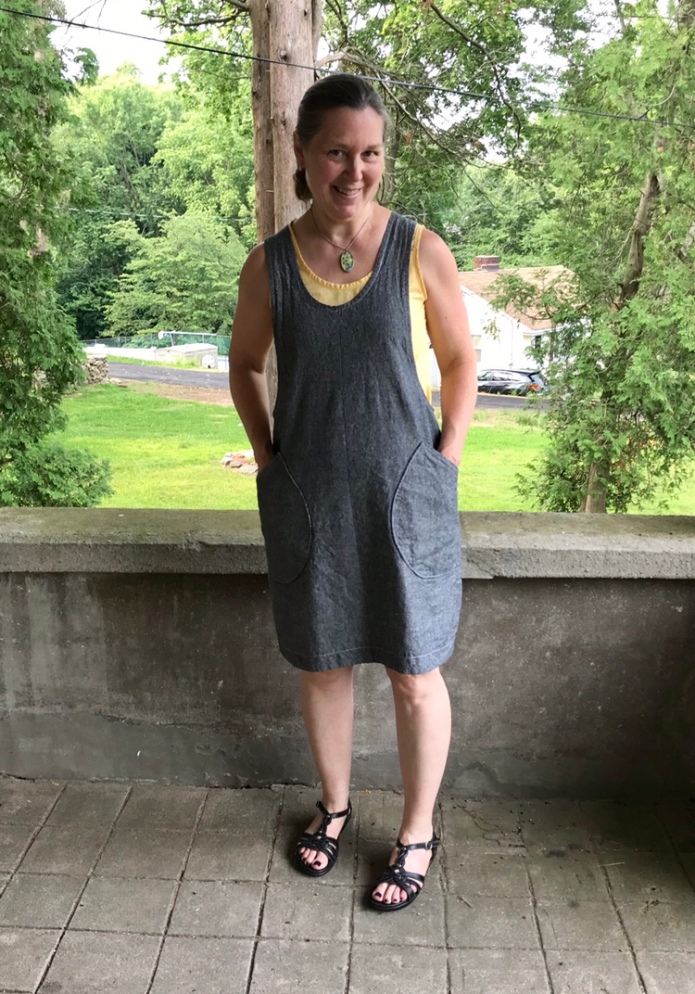




 So maybe the fabric I cut out hadn’t been pre-washed (although I am almost positive I had washed it before I put it away last year) or maybe this linen-cotton blend really shrinks a lot? Either way, I am thrilled because after taking the time to line the pockets
So maybe the fabric I cut out hadn’t been pre-washed (although I am almost positive I had washed it before I put it away last year) or maybe this linen-cotton blend really shrinks a lot? Either way, I am thrilled because after taking the time to line the pockets

















 The Josephine is usually made with pleats but Rae posted a
The Josephine is usually made with pleats but Rae posted a  The actually cutting and sewing of the pattern is very straightforward. The front is sewn together and the back is one piece cut on the fold. You gather the fabric in the center back and the center of the two front pieces. You cut the two mirror halves of the front, one back piece and two sleeves.
The actually cutting and sewing of the pattern is very straightforward. The front is sewn together and the back is one piece cut on the fold. You gather the fabric in the center back and the center of the two front pieces. You cut the two mirror halves of the front, one back piece and two sleeves. 
 I usually stitch just on the edge of the cuff, not in the ditch.
I usually stitch just on the edge of the cuff, not in the ditch. 
 I have to say I was thrilled with how this turned out. I used bias strips of Liberty as hem facings, as one does.
I have to say I was thrilled with how this turned out. I used bias strips of Liberty as hem facings, as one does.
 I had enough of these two fabrics to also make a version of the
I had enough of these two fabrics to also make a version of the 


 I used the curved hem from the Gemma tank as my guide for this hem. I love how you can mix and match Rae’s patterns.
I used the curved hem from the Gemma tank as my guide for this hem. I love how you can mix and match Rae’s patterns. 
 The other side view.
The other side view. I look as though I am summoning the backyard spirits but I think my husband caught me on the way to fix my hair and put it behind my ears.
I look as though I am summoning the backyard spirits but I think my husband caught me on the way to fix my hair and put it behind my ears. As you can see in the next picture. He takes a zillion pictures and then I whittle them down to a few.
As you can see in the next picture. He takes a zillion pictures and then I whittle them down to a few.  What can I say? Perfect combination of pattern and fabrics. The Loominous version is going to be great too.
What can I say? Perfect combination of pattern and fabrics. The Loominous version is going to be great too. 
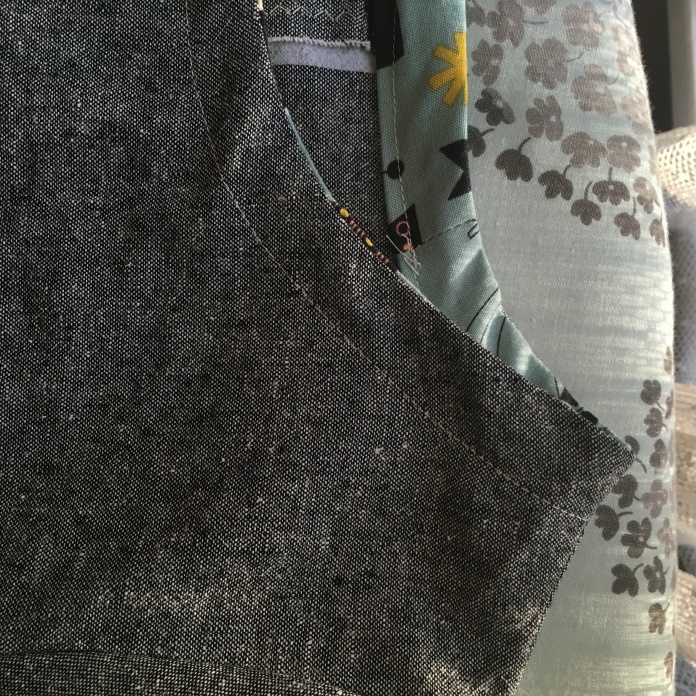 It’s all about the zipper.
It’s all about the zipper. I originally bought this
I originally bought this  Here are some tricks/shortcuts I use when making this pattern. First, I size up for french seams: I cut on the next size up cutting line for the sleeves and side seams to allow room for french seams. I don’t seem to be able to capture the fraying threads with just one seam and always end up with two, no matter how well I think I have trimmed the threads. Since this happens every time I sew french seams, I am trying to just roll with it and know that my seams are very strong (ha!) and I need to plan for it. I cut on the Large seam line although I am generally more of a medium. This gives me enough space for my double seam and have the dress still fit. By the way, I only use french seams for the long seam from the wrist to the hem. I am not confident enough to attempt them at the shoulder seam. Those I sew using a regular seam and then zigzag to finish.
Here are some tricks/shortcuts I use when making this pattern. First, I size up for french seams: I cut on the next size up cutting line for the sleeves and side seams to allow room for french seams. I don’t seem to be able to capture the fraying threads with just one seam and always end up with two, no matter how well I think I have trimmed the threads. Since this happens every time I sew french seams, I am trying to just roll with it and know that my seams are very strong (ha!) and I need to plan for it. I cut on the Large seam line although I am generally more of a medium. This gives me enough space for my double seam and have the dress still fit. By the way, I only use french seams for the long seam from the wrist to the hem. I am not confident enough to attempt them at the shoulder seam. Those I sew using a regular seam and then zigzag to finish.  I don’t gather the sleeves: It may sound funny but I don’t gather the sleeves. I have only made the Pearl with heavier fabric with some stretch/give. I line up the center of the sleeve with the shoulder seam, pin it, and then I sew from the top down in one direction and then from the top down on the other side without using pins, just holding the fabric in place as I go. I get a nice clean shoulder seam with no puckers. Then I sew the sleeve and side seams in one long seam. I generally end up trimming a bit of the sleeve before sewing the long seam in order to make everything line up but I end up with a nice looking sleeve that fits the way I want it too. I am happy with the somewhat close fit I get doing it this way and it is quick and easy. I wouldn’t try this at home using your nice fabric. I would try it first with a muslin to see if you like the way it fits, but I did it this way the first time and it has worked for me ever since (this is my 4th Pearl shift.) P
I don’t gather the sleeves: It may sound funny but I don’t gather the sleeves. I have only made the Pearl with heavier fabric with some stretch/give. I line up the center of the sleeve with the shoulder seam, pin it, and then I sew from the top down in one direction and then from the top down on the other side without using pins, just holding the fabric in place as I go. I get a nice clean shoulder seam with no puckers. Then I sew the sleeve and side seams in one long seam. I generally end up trimming a bit of the sleeve before sewing the long seam in order to make everything line up but I end up with a nice looking sleeve that fits the way I want it too. I am happy with the somewhat close fit I get doing it this way and it is quick and easy. I wouldn’t try this at home using your nice fabric. I would try it first with a muslin to see if you like the way it fits, but I did it this way the first time and it has worked for me ever since (this is my 4th Pearl shift.) P I use a contrasting lighter-weight fabric to finish the neck, hem and sleeves:
I use a contrasting lighter-weight fabric to finish the neck, hem and sleeves: 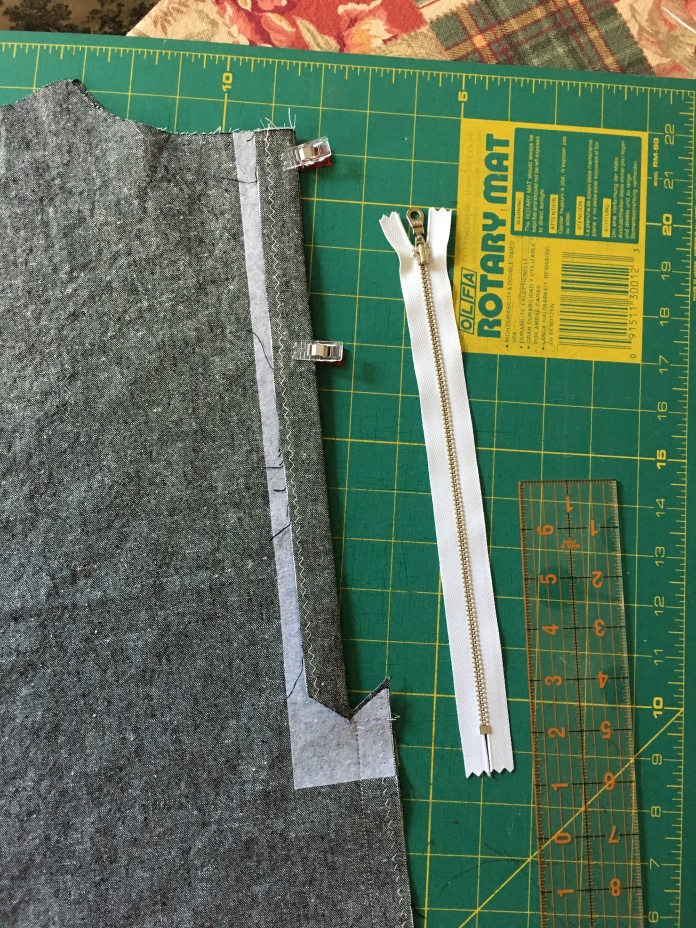 I blame the ruler that has different numbers on the two sides. Of course, I was looking at the wrong side when I measured. I took this picture May 19th and then the project sat as Me Made May sped by and then it was June. More pictures of the
I blame the ruler that has different numbers on the two sides. Of course, I was looking at the wrong side when I measured. I took this picture May 19th and then the project sat as Me Made May sped by and then it was June. More pictures of the 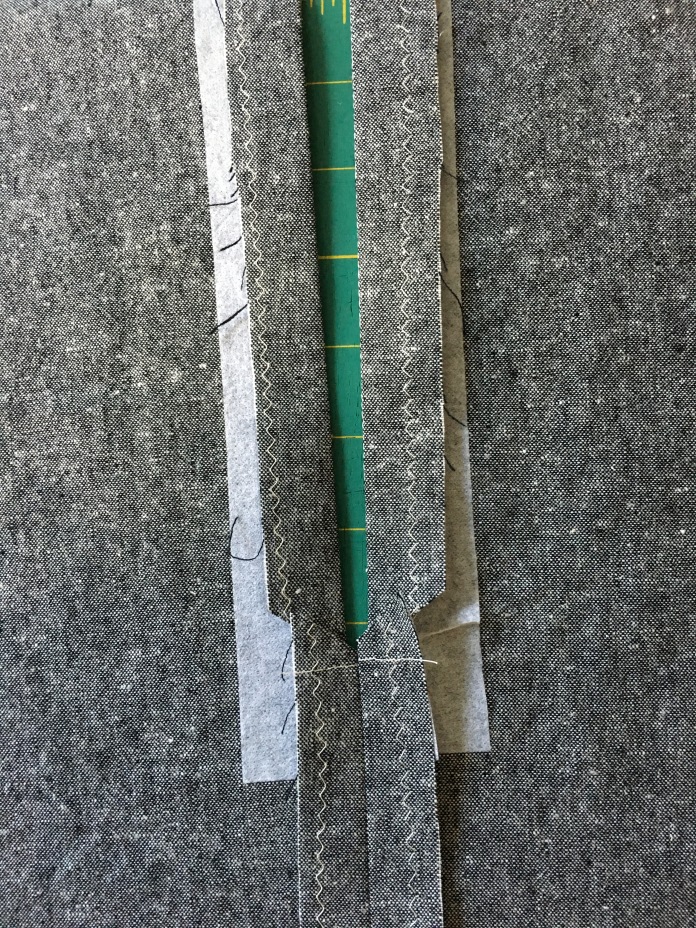 Hem facings in process: step 1
Hem facings in process: step 1 Step 2
Step 2 Step 3
Step 3 Sleeve facings
Sleeve facings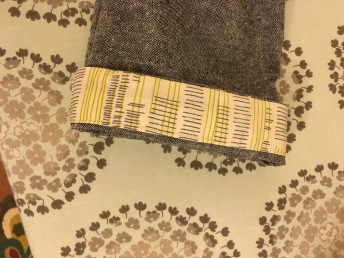

 Neckline with zipper. A little wonky but the nubby fabric hides all.
Neckline with zipper. A little wonky but the nubby fabric hides all. Neckline selfie. It’s a little higher than the Beatrix, a little 60’s looking. I like it with the linen. That’s my dad at a young age in the background. My
Neckline selfie. It’s a little higher than the Beatrix, a little 60’s looking. I like it with the linen. That’s my dad at a young age in the background. My  Front of finished dress once again
Front of finished dress once again Inside of dress front
Inside of dress front and back
and back